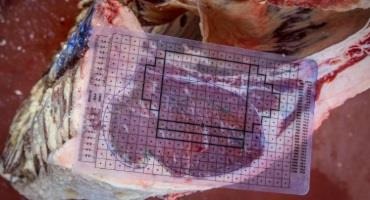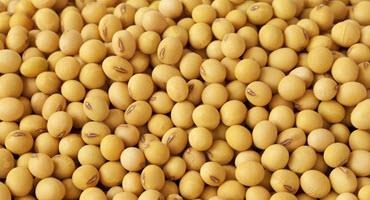How to Calculate Yield Grade in Beef Step by Step
Farms.com Home› News By Christina Bakker Beef carcass yield grades (YG) are used to estimate cutability, which is the amount of boneless, closely trimmed retail cuts from the round, loin, rib and chuck a carcass will yield. The system uses a numeric scale of 1 to 5; YG 1 carcasses have the highest, most-desirable cutability and YG 5 carcasses have the lowest, least-desirable cutability. There are four carcass characteristics that factor into a YG equation: hot carcass weight (HCW), ribeye area (REA), backfat thickness (BF) and kidney, pelvic and heart fat (KPH). Yield grades can be calculated based on the following equation: Calculate the values within the parenthesis first and then add or subtract as necessary. If you do not have a calculator on hand, YGs can be calculated using a series of adjustments based on BF, REA, KPH and HCW. Backfat is converted into a preliminary YG (PYG) value. Preliminary YG measurements start at 2.0, and 0.25 is added to the PYG measurement for every 0.1 inches of backfat (Table 1). Determine the required REA based on HCW. A 600-pound HCW requires a 11.0 in.2 REA. For every 25 pound increase in HCW, the required ribeye area increases by 0.3 in.2. For each 1 in.2 more than the required REA, subtract 0.3 from the PYG. For every 1 in.2 less than the required REA, add 0.3 to the PYG. Below are two tables to help determine required REAs. Adjust for % KPH. KPH measurements start at 3.5%, and for every 0.5% above 3.5%, add 0.1, and for every 0.5% below 3.5%, subtract 0.1 (Table 3). Final YG values for industry purposes are always rounded down, so a calculated YG of 3.9 is still a YG 3 carcass. Below is an example of how to calculate a YG using this method. Carcass Characteristics: Sheep Farming At Ewetopia Farms: Is Bedding Necessary For Sheep? At Ewetopia Farms, we use a lot of bedding for our sheep. Some people have questioned if that is really necessary for sheep - after all, they have lots of wool to keep them warm. Well, in this video we explain why we use so much of it and why we think it is beneficial for the sheep. Beef Carcass Yield Grades: What Do They Mean And How Are They Calculated?
Yield Grade Equation Factors

Calculating Yield Grades
STEP 1
Table 1
Backfat (inches) PYG 0 2.0 .2 2.5 .4 3.0 .6 3.5 .8 4.0 1.0 4.5 1.2 5.0 1.4 5.5 STEP 2
Table 2.1
HCW (lbs.) Required REA (in.2) 600 11.0 650 11.6 700 12.2 750 12.8 800 13.4 850 14.0 900 14.6 950 15.2 1000 15.8
Table 2.2
HCW (lbs.) Required REA (in.2) 600-608 11.0 609-616 11.1 617-224 11.2 225-633 11.3 STEP 3
Table 3
KPH (%) Adjustment 4.5 +0.2 4.0 +0.1 3.5 0 3.0 -0.1 2.5 -0.2 2.0 -0.3 1.5 -0.4 1.0 -0.5 Example
Backfat = 0.4 inches, HCW = 700 lbs., Actual REA = 14.0 in.2, KPH = 2%
Source : sdstate.edu Video: Sheep Farming At Ewetopia Farms: Is Bedding Necessary For Sheep?




This website uses tracking tools, including cookies. We use these technologies for a variety of reasons, including to recognize new and past website users, to customize your experience, perform analytics and deliver personalized advertising on our sites, apps and newsletters and across the Internet based on your interests.
You agree to our Privacy Policy and Terms of Access by clicking I agree.
Source: https://www.farms.com/news/beef-carcass-yield-grades-what-do-they-mean-and-how-are-they-calculated-175588.aspx
0 Response to "How to Calculate Yield Grade in Beef Step by Step"
Post a Comment